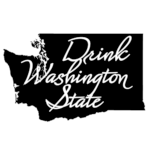-From Great Wine News
Washington State is most known for their apples, cherries, Walla Walla onions and evergreen trees. But during the month of March, their wine takes the stage.
Currently, the 2nd largest premium wine producer in the United States, Washington is making is their mark on palates around the world.
Celebrate this year’s Washington Wine Month by learning their history, understanding their terroir and of course, tasting their wine.
History:
Washington’s first wine grapes were planted at Fort Vancouver by the Hudson’s Bay Company in 1825. By 1910, wine grapes were growing in many areas of the state, following the path of early settlers. French, German and Italian immigrants pioneered the earliest plantings.
The arrival of Prohibition in 1920 put a damper on wine grape production, but ironically may have helped spawn early interest in home winemaking. At the end of Prohibition the first bonded winery in the Northwest was founded on Puget Sound’s Stretch Island. By 1938 there were 42 wineries located throughout the state.
The first commercial-scale plantings began in the 1960s. The efforts of the earliest producers, predecessors to today’s Columbia Winery and Chateau Ste. Michelle, attracted the attention of wine historian Leon Adams. Adams in turn introduced pioneering enologist Andre Tchelistcheff to Chateau Ste. Michelle. It was Tchelistcheff who helped guide Chateau Ste. Michelle’s early efforts and mentored modern winemaking in this state. The resulting rapid expansion of the industry in the mid 70s is now rivaled by today’s breakneck pace, where a new winery opens nearly every 15 days.
Significant developments in Washington State include the formation of the Washington State Wine Commission, a unified marketing and trade association, in 1987. In 1999, the Washington Wine Quality Alliance (WWQA) was established to spearhead development of industry standards in winemaking and labeling. In 2003, the Washington Wine Institute and its educational partners celebrated the state’s $2.3 million investment (per biennium) to create new 2-year and 4-year degree programs supporting Washington’s growing wine industry. The program provides an educated work force to satisfy the needs of the growing industry. A degree program, ongoing education and research enhance the state’s reputation as a quality wine producing region.
The trend for quality wine production started by a few home winemakers and visionary farmers has become a respected and influential $3 billion plus industry. From Italy to Australia, winemakers from all over the world have chosen to establish themselves in Washington, where they can create wines reflecting this region’s unique characteristics.
Fun Facts:
National rank:
2nd largest premium wine producer in the United States.
Number of wineries:
750+
Number of wine grape growers:
350+
Appellations:
Thirteen American Viticultural Areas (AVAs), as recognized and defined by the United States Treasury Department; Alcohol & Tobacco Taxes &Trade Bureau.
Varieties produced:
30+ varietals
Leading white varietal:
Riesling
Leading red varietal:
Cabernet Sauvignon
Wine production:
12 million cases
Record harvest:
2010 with 160,000 tons
Total economic impact on Washington State:
$3 billion*
Total economic impact on U.S. economy:
$4.7 billion*
*figures from the 2006 Economic Impact Study by MKF Research, LLC
Average hours of summer sunlight:
17.4 hours per day, about 2 hours more than California’s prime growing region.
There is sun 300 days a year.
Annual rainfall:
Eight inches (20.32 cm) in Eastern Washington (the major grape growing region) 48 inches (121.92 cm) in Western Washington
Eastern Washington is one of the highest latitude wine regions in the world.
There is up to 40º F difference between high day and low night time temps.
arious Soil Types:
A combination of mostly sandy, rocky based alluvial, some windblown over periodic volcanic basalt lift and patches of clay. Types include loess, basalt, clay, silt, loam, sandy loam.
The Seasons of Wine
Planting……………………January – March
Fermenting…………………..August – January
Growing…………………..March – September
Bottling……………………….February – May
Pruning……………………June – September
Harvesting………………..August – November
Celebrating………………….All Year Long
See the original article here

Recent Comments